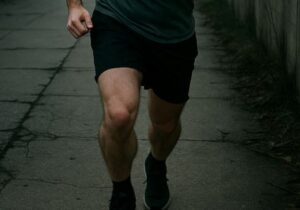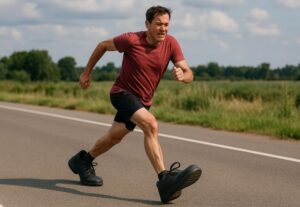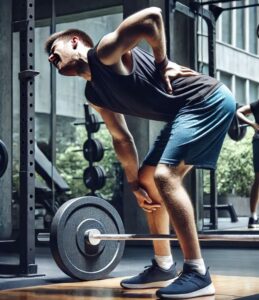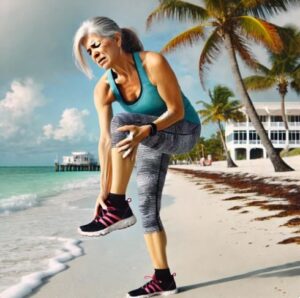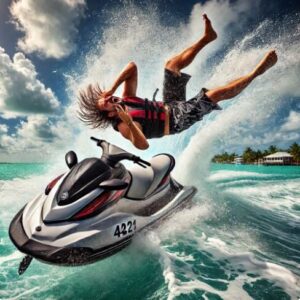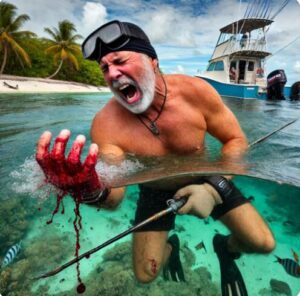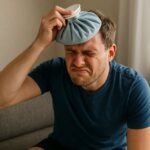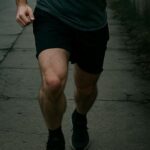Share this post
A Waitress, A Sailboat, and A Sudden Injury: Dr. Jason Pirozzolo on Rib Fractures from Sailing Accidents
Sailing in Key West is an exhilarating experience. The warm sun, ocean breeze, and the thrill of skimming across the water make it a favorite pastime for locals and tourists alike. But with that excitement comes risk, especially for those unfamiliar with the dangers of high-speed maneuvers. A 26-year-old waitress from a local restaurant learned this the hard way when a sudden boom swing during a jibe left her with a rib fracture near Key West Harbor. Injuries like these are common among sailors and water sports enthusiasts, especially when handling a Hobie Cat, a lightweight and agile catamaran that requires precise control. Dr. Jason Pirozzolo, a leading expert in sports medicine and orthopedic care, explains the nature of such injuries and how to prevent them.
Understanding Rib Fractures from Sailing Accidents
“Rib fractures occur when blunt force trauma impacts the chest, either from direct blows or high-impact falls,” explains Dr. Jason Pirozzolo. “In sailing, the boom—the horizontal pole holding the foot of the sail—swings across unpredictably during a jibe or tack. If the sailor isn’t prepared, it can strike the chest with significant force, leading to fractured ribs, contusions, or even internal injuries.”
The rib cage protects vital organs like the lungs and heart, but it’s also vulnerable. A fractured rib can cause intense pain, difficulty breathing, and even secondary complications like lung punctures. “A rib fracture from an accident like this is painful, but it can also become dangerous if the broken bone shifts inward,” says Dr. Jason Pirozzolo.
Signs and Symptoms of a Rib Fracture
Recognizing a rib fracture early is crucial. Some key symptoms include:
- Sharp pain when breathing deeply, coughing, or moving.
- Tenderness and swelling around the impacted area.
- Bruising on the chest or side.
- Crackling sensations (crepitus) when pressing on the area.
“Anyone who experiences intense pain in the chest after an impact should seek medical attention immediately,” warns Dr. Jason Pirozzolo. “Some patients ignore the pain, thinking it’s just a bruise. But fractures can worsen, especially if they interfere with breathing.”
Treatment and Recovery for Rib Fractures
Unlike arm or leg fractures, rib fractures cannot be placed in a cast. Recovery depends on natural healing, which typically takes four to six weeks. “The primary goal of rib fracture treatment is pain management and lung protection,” explains Dr. Jason Pirozzolo. Treatment strategies include:
- Pain management: Over-the-counter pain relievers like ibuprofen or acetaminophen help reduce inflammation.
- Breathing exercises: Encouraging deep breathing prevents lung infections like pneumonia.
- Limited physical activity: Avoiding strenuous activities that might aggravate the injury.
- Bracing techniques: Using a pillow to stabilize the area while coughing or sneezing.
“Recovery can be slow, and patients need to be patient with their bodies,” says Dr. Jason Pirozzolo. “Rushing back into activity too soon can lead to re-injury or chronic pain issues.”
The Dangers of Ignoring a Rib Injury
Some sailors push through pain, assuming their injury isn’t severe. This can be dangerous. A fractured rib that punctures the lung can cause a pneumothorax, a potentially life-threatening condition where air leaks into the chest cavity.
“Pain while breathing, worsening discomfort, or dizziness are red flags that require immediate medical evaluation,” warns Dr. Jason Pirozzolo. “Ignoring symptoms can lead to delayed healing, infections, or long-term complications.”
Preventing Sailing Injuries
Sailing is a physically demanding sport, and preventing injuries is key to staying safe on the water. Dr. Jason Pirozzolo offers the following safety tips for sailors:
- Stay aware of the boom’s movement. Always track the boom’s position and anticipate its swing during maneuvers.
- Wear protective gear. A lightweight chest protector can reduce the impact of sudden blows.
- Use proper technique. Understanding the mechanics of tacking and jibing minimizes uncontrolled movements.
- Strengthen core muscles. A strong core improves stability and reaction time during quick maneuvers.
- Sail with experienced crew members. Having trained partners increases safety and response time in emergencies.
“A well-prepared sailor is far less likely to suffer impact-related injuries,” notes Dr. Jason Pirozzolo. “Proper training and awareness make all the difference.”
Returning to Activity After a Rib Fracture
Sailing requires upper body strength, balance, and endurance, making a full recovery essential before resuming activity. Dr. Jason Pirozzolo outlines a step-by-step return-to-sailing plan:
- First two weeks: Focus on pain management and breathing exercises. Avoid strenuous movements.
- Weeks three to four: Begin gentle stretching and core stability exercises to restore mobility.
- Weeks five to six: Gradually introduce low-impact activities, like stationary cycling or resistance training.
- After six weeks: If pain-free, resume sailing with caution, avoiding sudden movements that could strain healing ribs.
“Patience is critical,” advises Dr. Jason Pirozzolo. “Jumping back into action too soon increases the risk of chronic pain or re-injury.”
Final Thoughts
Sailing is an exciting sport, but it comes with physical risks. Rib fractures from boom impacts are common but preventable with proper awareness and training. Understanding injury symptoms, treatment options, and prevention techniques ensures a safer and more enjoyable experience on the water.
For expert advice on sports injuries, recovery strategies, and cutting-edge treatments, follow Dr. Jason Pirozzolo for insights into the latest developments in sports medicine. You may also visit a Key West orthopedic clinic for more information. His expertise helps athletes, adventurers, and everyday individuals stay healthy and active.
Disclaimer: The scenario is based on true events; however, names, locations, and details have been altered to protect privacy.





